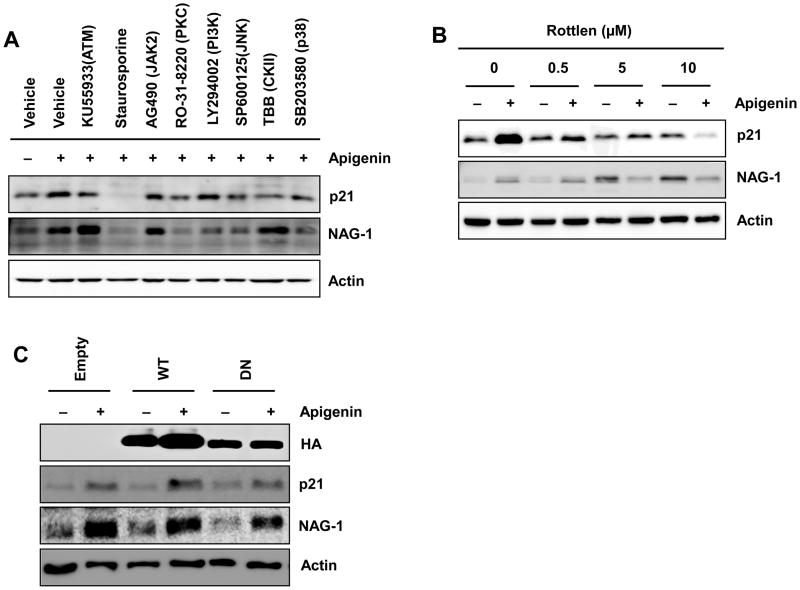Figure 4.
Effects of kinase inhibitors on apigenin-induced p21, and NAG-1 expression. A) HCT-116 cells were pretreated with DMSO, ATM inhibitor (KU55933, 10 μM), p38MAPK inhibitor (SB203580, 10 μM), CKII inhibitor (TBB, 5 μM), JNK inhibitor (SP600125, 10 μM), PI3K inhibitor (LY294002, 20 μM), PKC inhibitor (RO-318220, 2.5 μM), JAK-2 inhibitor (AG490, 50 μM), and pan-kinase inhibitor (staurosporine, 5μM), for 30 min and followed by treatment with 10 μM of apigenin for an additional 24 h. The cell lysates were harvested and subjected to Western blot anaylsis to examine p21, NAG-1, and actin expression. B) HCT-116 cells were treated with DMSO, and different concentrations of Rottlerin (0.5, 5, 10 μM) in serum-free media. After 30 min pre-treatment, either DMSO or 10 μM of apigenin was added directly to the media. After 24 h incubation, cell lysates were harvested and then subjected to Western blot using antibodies for p21, NAG-1, and actin. C) HCT-116 cells were transfected with empty, wild type (WT), or dominant negative (DN) PKCδ expression vector as described previously (43). The cells were then treated with 10 μM of apigenin for 24 h. Western analysis was performed for hemagglutinin (HA), NAG-1, p21, and actin antibodies.

